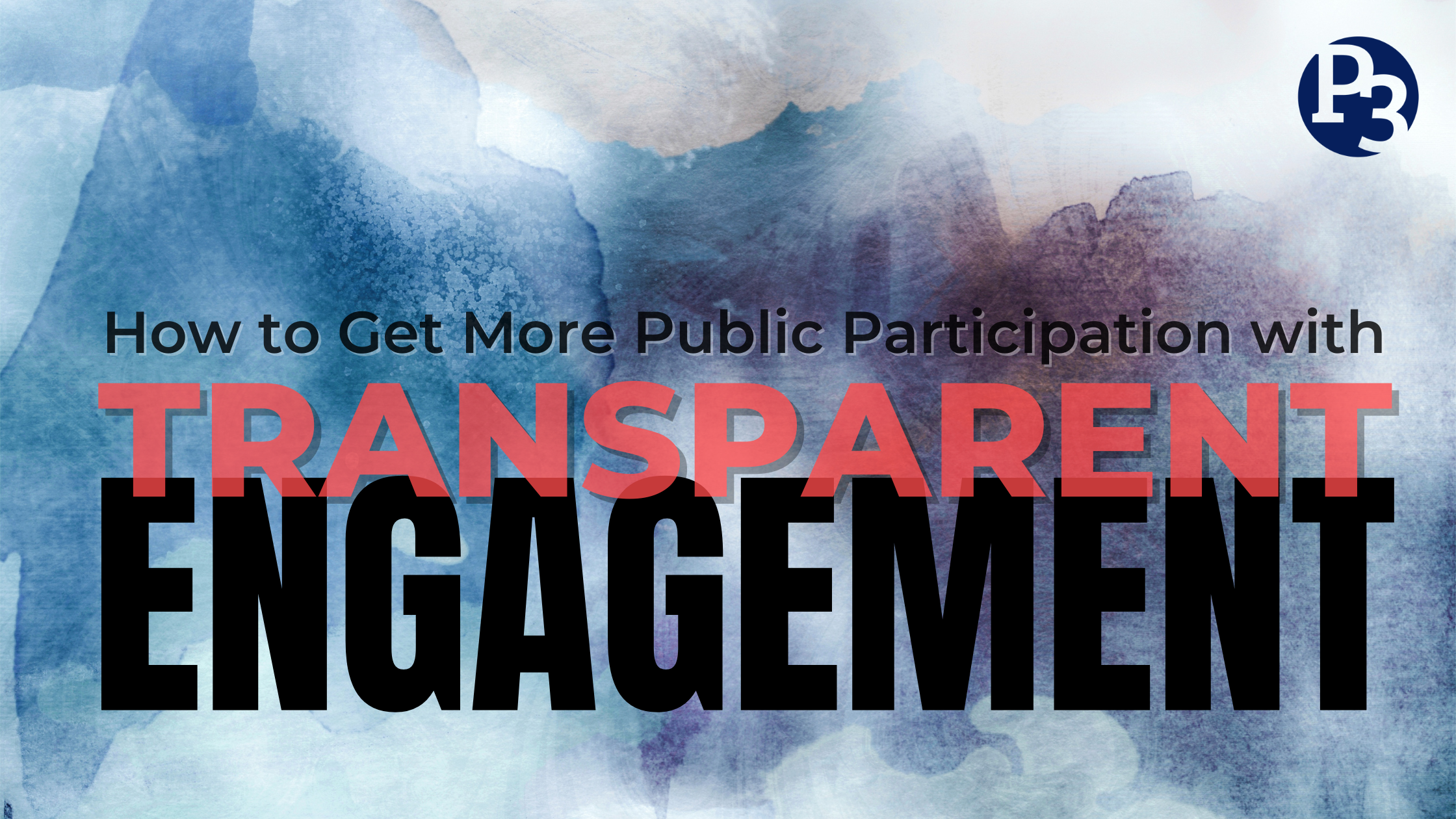
11 Feb How to Get More Public Participation With Transparent Engagement
At P3, one of our core values is transparency in public engagement. We believe that it is crucial for communication with the public to be open and transparent. The public should know how much they can influence a decision, what they have control over, and how their participation and feedback factor into decision-making. Practicing transparent engagement not only helps close the feedback loop with the public, but also establishes a relationship of trust between an agency and the community.
Think about it: would you want to participate in something if you didn’t know what impact you could have? If you thought that your involvement did not affect anything, why would you put forth the effort?
The public needs to understand how their participation affects decision-making – otherwise, they will not be inclined to participate. Not only do they want to understand, but they deserve to know and be kept continuously informed throughout the process. By doing this, you encourage the public to continue to engage in the future, as they understand the weight and impact of their involvement.
Be honest about the impact the public can have on decision-making.
At the beginning of the engagement process, it’s important to clearly articulate what effect the public will be able to have in decision-making. They may not be able to influence specific decisions or policies. Their input may only serve as a guide for recommendations, but decision-makers may choose to implement something else.
Be sure to communicate the level of impact their participation can have. This is the key to transparent engagement – the public deserves to know the impact of their involvement. Otherwise, you could be setting up false expectations and community members can then feel less inclined to participate in the future because they do not see the value in participating.
Close the feedback loop.
A central component of transparent engagement is closing the feedback loop. By clearly communicating results of engagement to the public, they will understand the value of their participation and how their input was used. This helps show the community that their opinions and feedback were heard and that you valued their participation.
Here are a couple of strategies for closing the feedback loop when engaging the public:
Document feedback.
You won’t be able to report on feedback received if you don’t document it in the first place. It’s crucial to take notes during meetings, keep databases of survey comments, and have records of all engagement and involvement events or phases. This ensures reliability in the engagement process and you will have something to refer back to if the public asks about the basis for a particular decision.
Summarize public input after each engagement event.
After each engagement event or phase, it’s best practice to summarize what took place and the findings from public input. This summary should be written concisely and include necessary information for the public to understand what happened and what the general consensus was. Share these summaries via a project website, email blasts, and other communication methods after each event or phase so the public can stay up-to-date on the feedback provided thus far.
Keep a record of past summaries available on the project website.
Keep all of the summaries on the project website if possible, even if they happened multiple phases ago. This provides a continuous record of engagement and input for the public to view and follow along during the decision-making process.
Create an email subscription for project updates and share information with subscribers.
Another way to practice open communication is through the creation of a subscription email list. Allow community members to subscribe for project updates and use this communication tool to send out project updates as well as summaries of engagement, opportunities for public engagement, and more. This can create a continuous stream of communication with the public.
Regularly give community members the chance to subscribe for updates. Include a section on the project website for subscriptions, and ask at meetings and other public engagement events to give all that are interested a chance to join.
Why does this matter? We’ve discussed strategies of open and transparent communication, but why put in the effort to do it? Simply put – transparent engagement is more reliable and helps establish a relationship of trust with the community. Community members will feel that their input is valued and they are heard, and they will feel more inclined to participate in the future because they understand why their involvement matters.
All agencies and planners should strive to close the feedback loop and engage the public in transparent ways to establish themselves as reliable, credible, and trustworthy.
About the Author: Katie Maynard started her journey with Public Participation Partners as a Community Engagement Assistant in January 2020. When not assisting with public involvement, Katie enjoys reading, traveling to the beach, and spending time with her pets.


Sorry, the comment form is closed at this time.